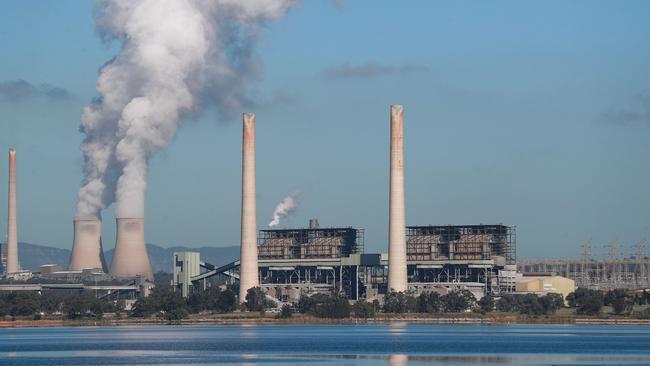‘Half the pay’: redundant coal workers pay long-term price
Workers who lost their jobs from coal-fired power plant closures over the past decade were earning only half their pre-redundancy income years after being laid off, new research has revealed.

Workers who lose their jobs when a coal-fired power plant closes are earning only half their pre-redundancy income years after being laid off.
New research by independent think tank e61 Institute reveals the heavy cost some workers, their families and communities will have to bear as a result of the nation’s energy transition.
The research used new Australian Taxation Office data to track the impact on individuals from the dozen coal-fired plant closures in the decade to 2020, including the high-profile closing of Hazelwood in Victoria’s Latrobe Valley in 2017.
The analysis shows redundant coal-fire power workers were more heavily affected than workers who lost their jobs in other industries, where earnings were back to 75 per cent of pre-redundancy levels four years later.
The findings come just days after the Mt Isa community was devastated by mining giant Glencore’s decision it would close three underground copper mines, at a cost of 1200 workers.
Dan Andrews, research director at e61 and co-author of the report, said the research pointed to the potential need for further support for those whose livelihoods were collateral damage in the race to a net-zero emission economy.
“This is the first actual evidence what happened to these workers, and they did a lot worse than anyone else who lost their job in the economy,” Mr Andrews said.
The number of workers who would be directly affected by the end of the coal-fired energy industry numbered in the thousands, or a fraction of the half a million people who came in and out of the labour force every month.
“The difference here is people are going to lose their job as a result of government action – that is different from the usual ebbs and flows of the market. In effect, they are losing their jobs for the greater good,” Mr Andrews said.
The country’s remaining 18 coal-fired power plants are due to shut over the next 25 years, including NSW’s Eraring and Bayswater plants in 2025 and 2033 – events which loom large over Lake Macquarie and Muswellbrook.
Victoria’s Loy Yang A power plant in Traralgon is another major plant due to close, this time in 2033.

Mr Andrews said a failure by politicians to respond adequately with more targeted support could damage the “fragile consensus” on the need to decarbonise the economy.
“There is a broader question here about how society deals with economic restructuring more generally, and do we have the policies in place to deal with that. This research is intended to launch a broader national conversation about this issue,” he said.
The necessary research to underpin policy options would most obviously be the remit of the newly budgeted, but yet to be legislated, Net Zero Authority.
The e61 paper made three key findings. First, that redundant workers typically endured a large drop in income, earning about 43 per cent less in the year after redundancy, but that, second, coal-fired power plant workers experienced a much larger hit, with earnings falling nearly 70 per cent in the first year after being laid off.
And this relative disadvantage was persistent, the research showed.
After four years, coal-fired power plant workers earned about 50 per cent less, compared to 29 per cent for all other workers.
The e61 research paper, co-written by Elyse Dwyer and Lachlan Vass, suggested a number of potential reasons why coal-fire plant workers suffered a much larger hit to their earnings than those made redundant in other industries.
The typical worker in coal-fired power plants were older and had non-transferable skills using highly specialised equipment. It was also possible that they lost bargaining power as they moved into less unionised workplaces.
Finally, the hit to the local economy from the loss of a major employer may also have the knock-on effect of fewer job opportunities in that community.








To join the conversation, please log in. Don't have an account? Register
Join the conversation, you are commenting as Logout